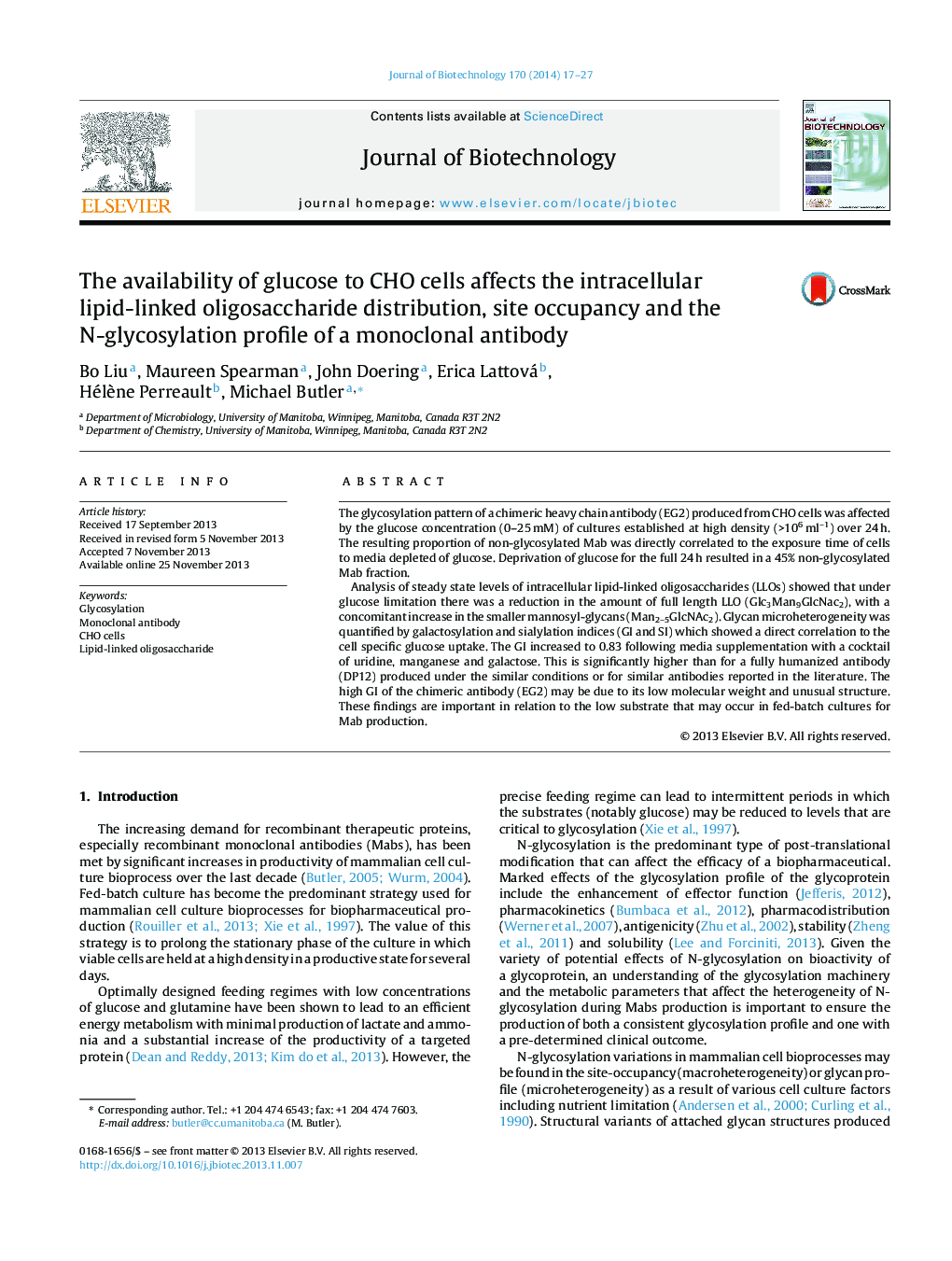| کد مقاله | کد نشریه | سال انتشار | مقاله انگلیسی | نسخه تمام متن |
|---|---|---|---|---|
| 23259 | 43426 | 2014 | 11 صفحه PDF | دانلود رایگان |

• The proportion of non-glycosylated Mab directly correlated to exposure time of CHO cells to media depleted of glucose.
• Low glucose resulted in a reduction of intracellular full length LLO and an increase in the smaller mannosyl-glycans.
• The galactosylation index (GI) of EG2 antibody was inversely correlated to the exposure time of cells to depleted glucose.
• The GI of the chimeric human-camelid EG2 antibody increased to 0.83 following media supplementation.
• The GI of EG2 was significantly higher than for a fully humanized antibody (DP12) produced under the similar conditions.
The glycosylation pattern of a chimeric heavy chain antibody (EG2) produced from CHO cells was affected by the glucose concentration (0–25 mM) of cultures established at high density (>106 ml–1) over 24 h. The resulting proportion of non-glycosylated Mab was directly correlated to the exposure time of cells to media depleted of glucose. Deprivation of glucose for the full 24 h resulted in a 45% non-glycosylated Mab fraction.Analysis of steady state levels of intracellular lipid-linked oligosaccharides (LLOs) showed that under glucose limitation there was a reduction in the amount of full length LLO (Glc3Man9GlcNac2), with a concomitant increase in the smaller mannosyl-glycans (Man2–5GlcNAc2). Glycan microheterogeneity was quantified by galactosylation and sialylation indices (GI and SI) which showed a direct correlation to the cell specific glucose uptake. The GI increased to 0.83 following media supplementation with a cocktail of uridine, manganese and galactose. This is significantly higher than for a fully humanized antibody (DP12) produced under the similar conditions or for similar antibodies reported in the literature. The high GI of the chimeric antibody (EG2) may be due to its low molecular weight and unusual structure. These findings are important in relation to the low substrate that may occur in fed-batch cultures for Mab production.
Journal: Journal of Biotechnology - Volume 170, 20 January 2014, Pages 17–27